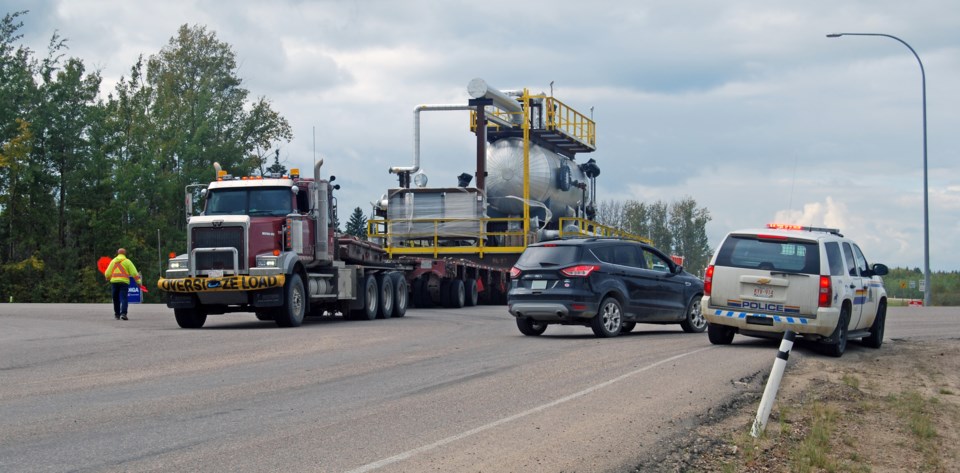It can happen on any of the region’ s highways. You’ re driving along and you encounter a truck hauling an oversize load.
It can happen on any of the region’ s highways. You’ re driving along and you encounter a truck hauling an oversize load.
It might just be traveling below the speed limit-as it’ s required to do by law-or the load might be wide enough to block multiple lanes. Either way, you want to get past it.
Coalition for a Safer 63 and 881 executive director Debbie Hammond says if you’ re impatient enough to try passing unsafely, then the wide load is not the problem-you are.
When wide loads have pilot vehicles accompanying them and they’ re complying with safety regulations, they’ re not traffic hazards in and of themselves, she says.
“There’ s a lack of understanding about what wide loads can and can’ t do,” said Hammond. “From a safety perspective, they follow all these restrictions. I often feel that it’ s the lone drivers in the smaller vehicles that are the bigger threat.”
Motorists that try to get around wide loads are often putting themselves and others at risk unnecessarily, she says.
“In most cases, you can’ t really see around,” Hammond told the POST. “If it’ s a really wide load, you can’ t see what’ s coming at you.”
If it’ s so risky, then why do drivers do it anyway? Hammond doesn’ t know for sure, but she thinks it’ s a simple lack of awareness. Drivers don’ t always understand that wide loads are very limited in what they can do, she says.
“Wide loads can only travel in daylight. They cannot just pull over to the side of the road, and they’ re mandated to travel 60 kilometres per hour when they have a full load,” she said.
As much as they’ re an inconvenience, drivers shouldn’ t be unhappy to see them, she says, because they’ re often associated with industrial developments. If they’ re on the move, that means there’ s economic activity, she says.
In many cases, people traveling the highways can avoid them or at least prepare for them by consulting 511 Alberta beforehand. The highway information service lists the routes and travel times of all wide loads currently on the move throughout the province.
